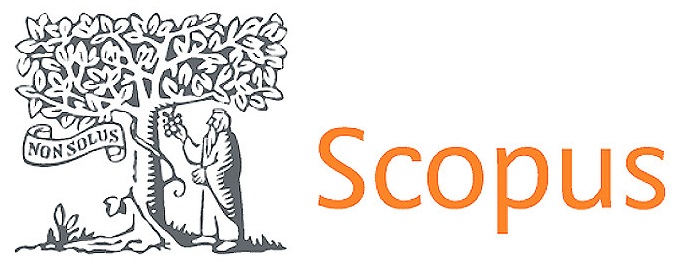India Semi-Arid Settings Examine the Relationship between Planting Dates, Irrigation, and Nitrogen Stress on the Grain Quality of Different Maize Cultivars
DOI:
https://doi.org/10.56294/saludcyt20251593Keywords:
Maize grain quality, nitrogen fertilization, irrigation frequency, planting date, protein content, oil compositionAbstract
Introduction: Maize production in India's semi-arid regions is heavily reliant on environmental factors and agricultural practices. The planting dates of August 19 and September 20, irrigation levels, and nitrogen availability all have a substantial impact on grain output and quality. The research investigates how these factors interact to influence various maize cultivars. Understanding these associations can aid in optimizing management tactics for increased maize output.
Methods:A field experiment examined the effects of nitrogen treatment, irrigation frequency, and planting dates on maize quality. Principal Component Analysis (PCA) found important causes of variability in carbohydrate, protein, and oil contents. Over the course of two years, data were obtained from India's maize yield dataset.
Result: The first two main components explained 82% of the overall variance. In high-nitrogen crops, protein levels increased by 5.5 g kg⁻¹ in the first year and 9.8 g kg⁻¹ in the second year. Total redundant amino acids also increased by 3.1 g kg⁻¹ in 2020-2021. Moderate irrigation increased oil, triglycerides, and saturated fatty acids, but starch and amyl pectin had negligible modifications. At moderate irrigation, nitrogen had no effect. Total saturated fatty acids rose as planting dates shifted earlier.
Conclusion:Nitrogen levels, irrigation, and planting dates all had a substantial impact on Maize composition. Despite the managed water supply, seasonal volatility remained critical. These findings can help optimize maize production practices to improve grain quality under various environmental circumstances.
References
1. Ghalkhani A, Golzardi F, Khazaei A, Mahrokh A, Illés Á, Bojtor C, Mousavi SM, Széles A. Irrigation management strategies to enhance forage yield, feed value, and water-use efficiency of sorghum cultivars. Plants. 2023 May 30;12(11):2154.https://doi.org/10.3390/plants12112154 DOI: https://doi.org/10.3390/plants12112154
2. Motazedian A, Kazemeini SA, Bahrani MJ. Sweet corn growth and GrainYield as influenced by irrigation and wheat residue management. Agricultural Water Management. 2019 Sep 1;224:105748. https://doi.org/10.1016/j.agwat.2019.105748 DOI: https://doi.org/10.1016/j.agwat.2019.105748
3. Ahmad I, Ahmad B, Boote K, Hoogenboom G. Adaptation strategies for maize production under climate change for semi-arid environments. European Journal of Agronomy. 2020 Apr 1;115:126040..https://doi.org/10.1016/j.eja.2020.126040 DOI: https://doi.org/10.1016/j.eja.2020.126040
4. Ghalkhani A, Paknejad F, Mahrokh A, Ardakani MR, Golzardi F. Transplanting and Seed Hydropriming Affects Yield, Water Use Efficiency, and Grain Quality of Maize Cultivars under Delayed Planting. Journal of Agricultural Sciences. 2022 Oct 30:53-. DOI: https://doi.org/10.15832/ankutbd.995878
5. Delfani M, Akbari M, Vafa P, MalekMaleki F, Masoumi A. The effect of plant density and supplementary irrigation on nutritional value of two safflower (Carthamustincturius l.) forage crops. Communications in Soil Science and Plant Analysis. 2022 Jun 17;53(11):1355-78. https://doi.org/10.1080/00103624.2022.2046032 DOI: https://doi.org/10.1080/00103624.2022.2046032
6. Rahimikhoob H, Sohrabi T, Delshad M. Simulating crop response to Nitrogen-deficiency stress using the critical Nitrogen concentration concept and the AquaCrop semi-quantitative approach.ScientiaHorticulturae 2021 Jul 27;285 : 110194. https://doi.org/10.1016/j.scienta.2021.110194 DOI: https://doi.org/10.1016/j.scienta.2021.110194
7. Jafarikouhini N, Kazemeini SA, Sinclair TR. Sweet corn nitrogen accumulation, leaf photosynthesis rate, and radiation use efficiency under variable nitrogen fertility and irrigation. Field Crops Research. 2020 Oct 15;257:107913. https://doi.org/10.1016/j.fcr.2020.107913 DOI: https://doi.org/10.1016/j.fcr.2020.107913
8. Si Z, Qin A, Liang Y, Duan A, Gao Y. A review on regulation of irrigation management on wheat physiology, grain yield, and quality. Plants. 2023 Feb 4;12(4):692. .https://doi.org/10.3390/plants12040692 DOI: https://doi.org/10.3390/plants12040692
9. Jahangirlou MR, Morel J, Akbari GA, Alahdadi I, Soufizadeh S, Parsons D. Combined use of APSIM and logistic regression models to predict the quality characteristics of maize grain. European Journal of Agronomy. 2023 Jan 1;142:126629..https://doi.org/10.1016/j.eja.2022.126629 DOI: https://doi.org/10.1016/j.eja.2022.126629
10. Feiziasl V, Jafarzadeh J, Sadeghzadeh B, Shalmani MM. Water deficit index to evaluate water stress status and drought tolerance of rainfed barley genotypes in cold semi-arid area of Iran. Agricultural Water Management. 2022 Mar 31;262:107395. https://doi.org/10.1016/j.agwat.2021.107395 DOI: https://doi.org/10.1016/j.agwat.2021.107395
11. RahimiJahangirlou M, Akbari GA, Alahdadi I, Soufizadeh S, Kumar U, Parsons D. Phenotypic traits, grain yield and yield components of maize cultivars under combinations of management practices in semi-arid conditions of Iran. International Journal of Plant Production. 2021 Sep;15:459-71. https://doi.org/10.1016/j.fcr.2020.107826 DOI: https://doi.org/10.1007/s42106-021-00151-7
12. Gholamhoseini M. Optimizing irrigation and nitrogen fertilization of Iranian sesame cultivars for grain yield and oil quality. Journal of Food Composition and Analysis. 2022 May 1;108:104448. https://doi.org/10.1016/j.jfca.2022.104448 DOI: https://doi.org/10.1016/j.jfca.2022.104448
13. Ahmad I, Wajid SA, Ahmad A, Cheema MJ, Judge J. Optimizing irrigation and nitrogen requirements for maize through empirical modeling in semi-arid environment. Environmental Science and Pollution Research. 2019 Jan 21;26:1227-37. https://doi.org/10.1007/s11356-018-2772-x DOI: https://doi.org/10.1007/s11356-018-2772-x
14. Kizilgeci F, Yildirim M, Islam MS, Ratnasekera D, Iqbal MA, Sabagh AE. Normalized difference vegetation index and chlorophyll content for precision nitrogen management in durum wheat cultivars under semi-arid conditions. Sustainability. 2021 Mar 26;13(7):3725..https://doi.org/10.3390/su13073725 DOI: https://doi.org/10.3390/su13073725
15. Zhang P, Ma G, Wang C, Lu H, Li S, Xie Y, Ma D, Zhu Y, Guo T. Effect of irrigation and nitrogen application on grain amino acid composition and protein quality in winter wheat. PLoS One. 2017 Jun 8;12(6):e0178494. https://doi.org/10.1371/journal.pone.0178494 DOI: https://doi.org/10.1371/journal.pone.0178494
Downloads
Published
Issue
Section
License
Copyright (c) 2025 Ansh Kataria, Devanshu J. Patel, Kotte Navya, Satya Narayan Satapathy, Shakti Om Pathak, Gunveen Ahluwalia (Author)

This work is licensed under a Creative Commons Attribution 4.0 International License.
The article is distributed under the Creative Commons Attribution 4.0 License. Unless otherwise stated, associated published material is distributed under the same licence.



